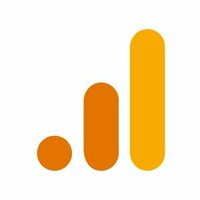Need advice about which tool to choose?Ask the StackShare community!
Get Advice from developers at your company using StackShare Enterprise. Sign up for StackShare Enterprise.
Learn MorePros of Grafana
Pros of Nagios
Pros of New Relic
Pros of Grafana
- Beautiful89
- Graphs are interactive68
- Free57
- Easy56
- Nicer than the Graphite web interface34
- Many integrations26
- Can build dashboards18
- Easy to specify time window10
- Can collaborate on dashboards10
- Dashboards contain number tiles9
- Open Source5
- Integration with InfluxDB5
- Click and drag to zoom in5
- Authentification and users management4
- Threshold limits in graphs4
- Alerts3
- It is open to cloud watch and many database3
- Simple and native support to Prometheus3
- Great community support2
- You can use this for development to check memcache2
- You can visualize real time data to put alerts2
- Grapsh as code0
- Plugin visualizationa0
Pros of Nagios
- It just works53
- The standard28
- Customizable12
- The Most flexible monitoring system8
- Huge stack of free checks/plugins to choose from1
Pros of New Relic
- Easy setup415
- Really powerful344
- Awesome visualization244
- Ease of use194
- Great ui151
- Free tier107
- Great tool for insights80
- Heroku Integration66
- Market leader55
- Peace of mind49
- Push notifications21
- Email notifications20
- Heroku Add-on17
- Error Detection and Alerting16
- Multiple language support13
- Server Resources Monitoring11
- SQL Analysis11
- Transaction Tracing9
- Azure Add-on8
- Apdex Scores8
- Detailed reports7
- Analysis of CPU, Disk, Memory, and Network7
- Application Response Times6
- Performance of External Services6
- Application Availability Monitoring and Alerting6
- Error Analysis6
- JVM Performance Analyzer (Java)5
- Most Time Consuming Transactions5
- Top Database Operations4
- Easy to use4
- Browser Transaction Tracing4
- Application Map3
- Weekly Performance Email3
- Custom Dashboards3
- Pagoda Box integration3
- App Speed Index2
- Easy to setup2
- Background Jobs Transaction Analysis2
- Time Comparisons1
- Access to Performance Data API1
- Super Expensive1
- Team Collaboration Tools1
- Metric Data Retention1
- Metric Data Resolution1
- Worst Transactions by User Dissatisfaction1
- Real User Monitoring Overview1
- Real User Monitoring Analysis and Breakdown1
- Free1
- Best of the best, what more can you ask for1
- Best monitoring on the market1
- Rails integration1
- Incident Detection and Alerting1
- Cost0
- Exceptions0
- Price0
- Proce0
Sign up to add or upvote prosMake informed product decisions
Cons of Grafana
Cons of Nagios
Cons of New Relic
Cons of Grafana
- No interactive query builder1
Cons of Nagios
Be the first to leave a con
Cons of New Relic
- Pricing model doesn't suit microservices20
- UI isn't great10
- Expensive7
- Visualizations aren't very helpful7
- Hard to understand why things in your app are breaking5
Sign up to add or upvote consMake informed product decisions
- No public GitHub repository available -
What is Grafana?
Grafana is a general purpose dashboard and graph composer. It's focused on providing rich ways to visualize time series metrics, mainly though graphs but supports other ways to visualize data through a pluggable panel architecture. It currently has rich support for for Graphite, InfluxDB and OpenTSDB. But supports other data sources via plugins.
What is Nagios?
Nagios is a host/service/network monitoring program written in C and
released under the GNU General Public License.
What is New Relic?
The world’s best software and DevOps teams rely on New Relic to move faster, make better decisions and create best-in-class digital experiences. If you run software, you need to run New Relic. More than 50% of the Fortune 100 do too.
Need advice about which tool to choose?Ask the StackShare community!
Jobs that mention Grafana, Nagios, and New Relic as a desired skillset
What companies use Grafana?
What companies use Nagios?
What companies use New Relic?
What companies use Grafana?
What companies use Nagios?
What companies use New Relic?
Sign up to get full access to all the companiesMake informed product decisions
What tools integrate with Grafana?
What tools integrate with Nagios?
What tools integrate with New Relic?
What tools integrate with Grafana?
What tools integrate with New Relic?
Sign up to get full access to all the tool integrationsMake informed product decisions
Blog Posts
What are some alternatives to Grafana, Nagios, and New Relic?
Datadog
Datadog is the leading service for cloud-scale monitoring. It is used by IT, operations, and development teams who build and operate applications that run on dynamic or hybrid cloud infrastructure. Start monitoring in minutes with Datadog!
Kibana
Kibana is an open source (Apache Licensed), browser based analytics and search dashboard for Elasticsearch. Kibana is a snap to setup and start using. Kibana strives to be easy to get started with, while also being flexible and powerful, just like Elasticsearch.
Prometheus
Prometheus is a systems and service monitoring system. It collects metrics from configured targets at given intervals, evaluates rule expressions, displays the results, and can trigger alerts if some condition is observed to be true.
Graphite
Graphite does two things: 1) Store numeric time-series data and 2) Render graphs of this data on demand
Splunk
It provides the leading platform for Operational Intelligence. Customers use it to search, monitor, analyze and visualize machine data.

































































